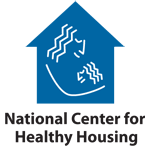Share
Related Topics
Tagged As
Formaldehyde is a contaminant of indoor air, originating from particle board, window coverings, paper products, and other sources. Indoor volatile organic compounds (VOCs) such as formaldehyde can contribute to allergies, asthma, headaches, and sick building syndrome. The concern is widespread; a 2002 report from the World Health Organization estimated that undesirable indoor volatiles represent a serious health problem that is responsible for more than 1.6 million deaths per year and 2.7% of the global burden of disease.
We do not strictly control Google ad content. If you believe any Google ad is inappropriate, please email us directly here.
Phytoremediation potential was assessed by exposing the plants to gaseous formaldehyde in airtight chambers constructed of inert materials and measuring the rate of removal. Osmunda japonica (Japanese royal fern), Selaginella tamariscina (Spikemoss), Davallia mariesii (Hare's-foot fern), Polypodium formosanum, Psidium guajava (Guava), Lavandula (Sweet Lavender), Pteris dispar, Pteris multifida (Spider fern), and Pelargonium (Geranium) were the most effective species tested. Ferns had the highest formaldehyde removal efficiency of the five classes of plants tested, with Osmunda japonica determined to be most effective of all 86 species, coming in at 50 times more effective than the least (D. deremensis) efficient species.
"Based on the wide range of formaldehyde removal efficiency among the plants tested, we separated the species into three general groups: excellent, intermediate, and poor", said corresponding author Kwang Jin Kim. "The species classified as excellent are considered desirable for use in homes and offices where the formaldehyde concentration in the air is a concern. It is evident from our results that certain species have the potential to improve interior environments and, in so doing, the health and well-being of the inhabitants".
The complete study and abstract are available on the ASHS HortScience electronic journal website: http://hortsci.ashspublications.org/cgi/content/abstract/45/10/1489.
Founded in 1903, the American Society for Horticultural Science (ASHS) is the largest organization dedicated to advancing all facets of horticultural research, education, and application. More information at ashs.org.
Public release date: 23-Jun-2011
Contact: Michael W. Neff
mwneff@ashs.org
703-836-4606
American Society for Horticultural Science
HHI Error Correction Policy
HHI is committed to accuracy of content and correcting information that is incomplete or inaccurate. With our broad scope of coverage of healthful indoor environments, and desire to rapidly publish info to benefit the community, mistakes are inevitable. HHI has established an error correction policy to welcome corrections or enhancements to our information. Please help us improve the quality of our content by contacting allen@healthyhouseinstitute.com with corrections or suggestions for improvement. Each contact will receive a respectful reply.
The Healthy House Institute (HHI), a for-profit educational LLC, provides the information on HealthyHouseInstitute.com as a free service to the public. The intent is to disseminate accurate, verified and science-based information on creating healthy home environments.
While an effort is made to ensure the quality of the content and credibility of sources listed on this site, HHI provides no warranty - expressed or implied - and assumes no legal liability for the accuracy, completeness, or usefulness of any information, product or process disclosed on or in conjunction with the site. The views and opinions of the authors or originators expressed herein do not necessarily state or reflect those of HHI: its principals, executives, Board members, advisors or affiliates.








